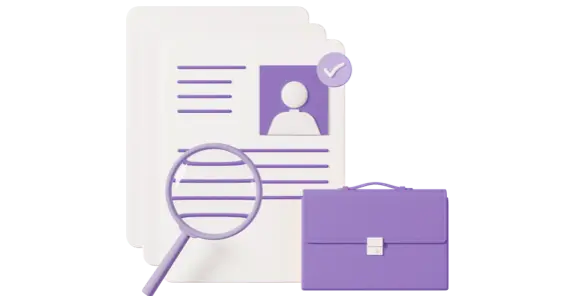Animator
Create drawings, models or 3D computer images to bring characters and stories to life in animated films, games and cartoons.
Also known as: modeller

About the job
Salary
Source: LMI for All
Weekly
£690
Average
Monthly
£2,990
Average
Yearly
£35,880
Average
6,000
people are currently employed
High growth
400 more jobs in 5 years
These figures refer to this job and similar ones with comparable skills and qualifications. They only apply to Scotland. Source: Oxford Economics
What it's like
You'd create detailed drawings, models or 3D computer images to bring characters, stories and ideas to life on screen in animated films, games and cartoons.
You'd use your imagination and acting skills to get personality and character into the animation. You might work on films like Toy Story, a television cartoon like The Simpsons, an advert, a computer game or a music video.
The most common method of animation is to create 3D computer-generated imagery (CGI).
In stop-frame animation you'd make puppets and photograph them as you change the puppets' positions over and over again. One second of film needs up to 25 photographs.
You would:
read the storyboard for the animation
plan and design the frames (pictures) which tell the story
draw background and characters using a range of materials, such as pencil, ink or paint
use digital equipment to copy the artwork hundreds of times with tiny changes in position
work with an editor to add dialogue or a soundtrack
make sure the action or characters' speech and movements follow the audio or soundtrack
On large or long-running productions, you could be part of a team working on one stage of production for several weeks, months or even years.
If it's a small project, you could be involved in many of the processes, from developing concepts to editing the final piece in post-production.

Hours

Environment
Explore more information about this job
Here are some useful links to learn more about this career:
Like the sound of this career?
Browse courses in Scotland related to 'Animator'
Select qualification level(s)
Other careers that you might like
Fine artist Illustrator Medical illustrator Concept Artist
Related industries
Many jobs can be done in lots of different industries. We've highlighted the ones we think are most important for this job.
Creative
Top skills
Skills are things you're good at. Whether you know what yours are or not, everyone has them!
It's useful to learn which ones are important in a job so you know the areas you need to brush up on. It can also help you work out if you're suited to a career.
Here are some of the skills you'll need to do this job:
- implementing ideas
- developing a plan
- attention to detail
- observation
- designing
- creative
- working with technology
- cooperating
- adaptability

Your skills are important
Our unique skillsets are what make us stand out from the crowd. Learn about each skill in depth and discover what employers look for in your applications and interviews.
Getting in
Explore the sections shown for more information about getting into this career.
You might have qualifications which are not shown here but will allow you access to a course. You can compare your qualifications by looking at their SCQF Level. For more information about this, check out the SCQF website.
Always contact the college, university or training provider to check exactly what you'll need.
Colleges and universities will list subjects you'll need for entry to a course. Some useful subjects include:
Art and Design
Computing Science
Creative Arts
Graphic Communication
Media
Skills for Work: Creative Digital Media
Skills for Work: Creative Industries
Foundation Apprenticeship: Creative and Digital Media
You can get a head start in this career by doing a Foundation Apprenticeship in S5 and S6.
You'll get an SCQF level 6 qualification which is the same level as a Higher. You'll also learn new skills and gain valuable experience in a work environment.
Discover what's on offer at your school on Apprenticeships.scot.
Higher National Certificate (SCQF Level 7) or Higher National Diploma (SCQF Level 8) or a degree (SCQF Level 9/10). Work-based qualifications such as a Modern Apprenticeship in Creative and Digital Media (SCQF Level 7) are also available.
To enter a Higher National Certificate (SCQF Level 7) or Higher National Diploma (SCQF Level 8) requires National 4/5 qualifications and 2 Highers.
To enter an Animation degree (SCFQ Level 9/10) requires National 5 qualifications and a minimum of four Highers at B or a relevant HNC/HND. To enter a postgraduate course (SCQF Level 11) requires a relevant degree and portfolio.
Qualifications that demonstrate creative skills and industry knowledge such as Skills for Work Creative & Digital (SCQF Level 4) or Creative Industries (SCQF Level 5) may be helpful.
Evidence of your ability as an animator
Portfolio of your work
Explore over 22,000 courses in Scotland
Find the perfect course to boost your career.
